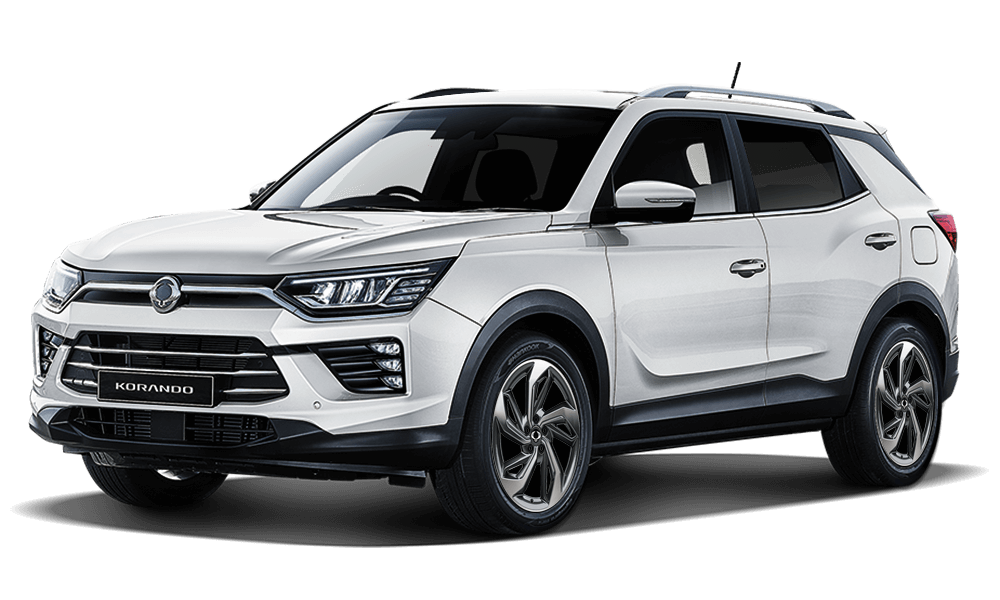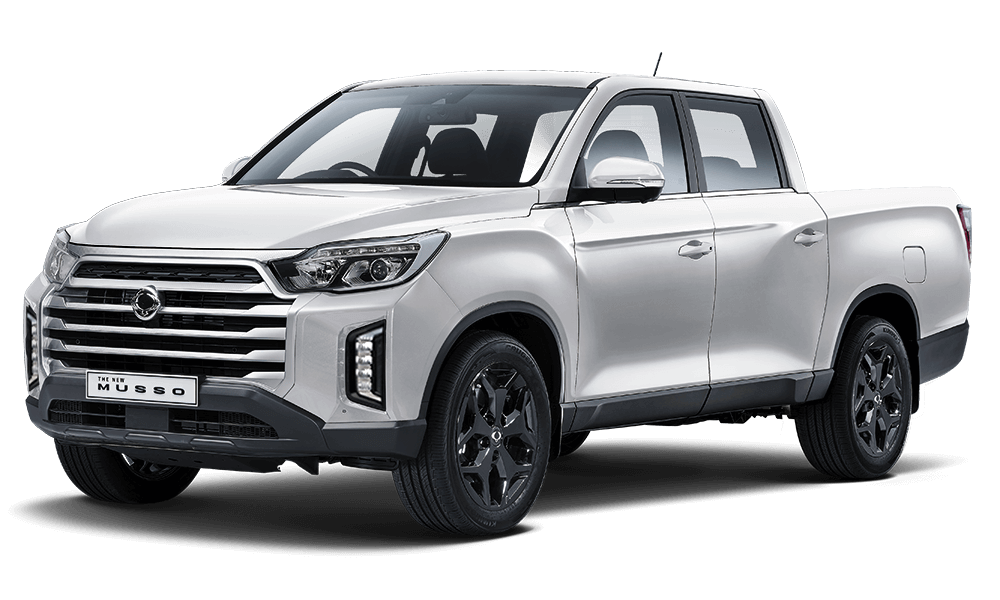SsangYong Rexton Ultimate 2020 review

Review courtesy of CarAdvice
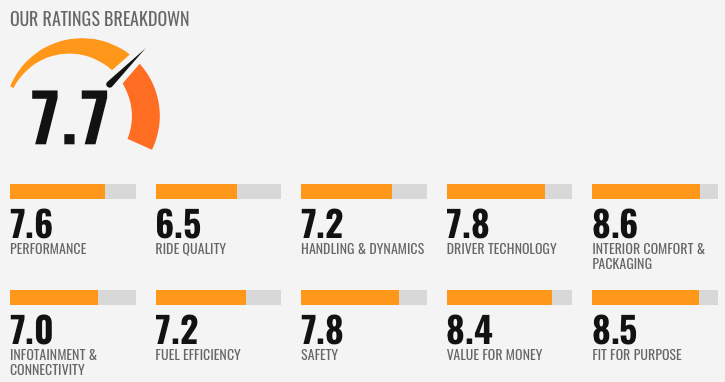
|
8.3L |
133kW |
218g |
N/A |
The segment-straddling SsangYong Rexton 4x4 has the looks, luxury and drivetrain to make inroads against more established players from the rugged Isuzu MU-X to the refined Hyundai Santa Fe crossover.
Remember SsangYong? That lesser-known Korean purveyor of affordable but strange-looking SUVs, utes and people-movers? Well, it’s back after a brief hiatus from our market, and has ambitions to carve out a niche in Australia’s intensely choice-rich vehicle market.
The relaunched bran offers four models for now, kicking off with the Tivoli small crossover to rival the Mazda CX-3 and co, its larger XLV spinoff, the Musso dual-cab ute, and the car you see here – its flagship Rexton seven-seat SUV.
We’re testing the top-of-the-range Rexton Ultimate, which wears a drive-away price of $52,990.
On the one hand, its rivals are fellow rugged family 4x4s like the Isuzu MU-X LS-T (currently $52,990 like the Rexton). On the other hand, the Rexton’s attributes also put it against more road-biased offers such as the Hyundai Santa Fe Highlander ($60,500 before on-road costs).
In other words, it’s competitively priced, but SsangYong isn’t out there simply throwing its cars away either. Yet it has a decent opportunity for success this time, for a couple of key reasons, despite the plethora of better-known products out there.
For one thing, the company has established its first factory-run operation outside Korea, choosing Australia as the pilot, and going away from its old model of using licensed private distributors. This model should be better for consumers, as there are no surplus ‘middlemen’ tightening margins, and fewer potential disconnects between head and regional offices.
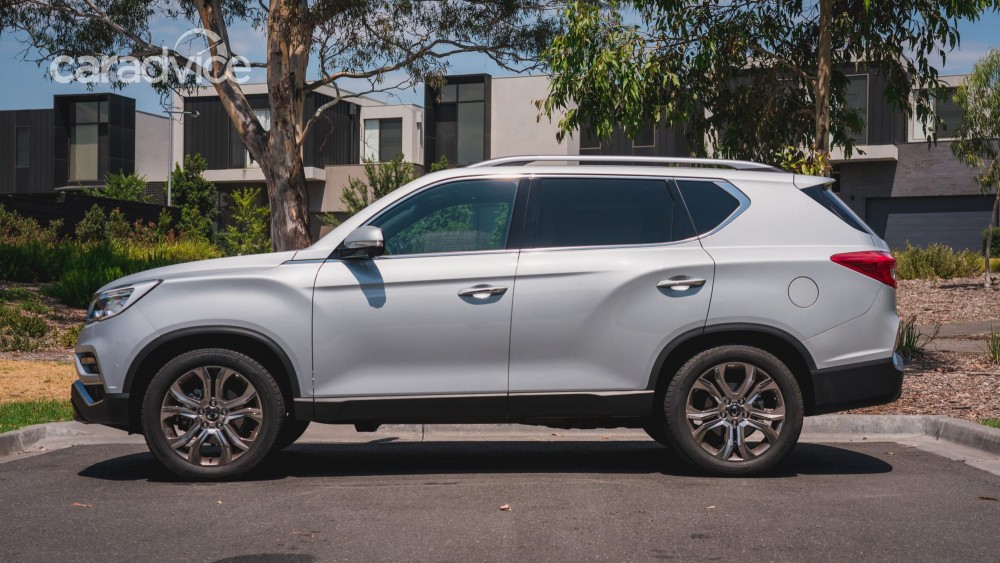
Beyond this, the calibre of product wearing the SsangYong badge appears far better. The old Rexton, Stavic and Musso might have been as tough as a pair of old boots, but this metaphor also explains the level of polish and style they exhibited.
For a bit of background, SsangYong actually claims to be Korea’s oldest automotive manufacturer, dating back to 1954. It makes that country’s only pick-up, and supplies its military. It also exports vehicles to 160 countries. While its finances were long tenuous, the company has been majority-owned, and backed, by India’s Mahindra & Mahindra since 2011.
Enough of that, now to the car at hand. If first impressions truly linger, then the Rexton makes a good start. Given its antecedents, the design is surprisingly brash yet resolved, tough yet sophisticated. The pronounced body sculpting over the wheel arches gives it a pumped-up vibe, though the nose could be made a little more macho to really make an impression.
Same goes for the interior, in the main. Not just in terms of its design, but also material and build quality.
Consider the (TPU) synthetic leather on the seats, doors and dash, with diamond-pattern stitching that could be out of a Mercedes-Benz. Or the faux wood accents offsetting the soft-touch plastic touchpoints, or the high-quality switchgear (with the sole and not insignificant exception of the tacky shortcut buttons on the steering wheel).
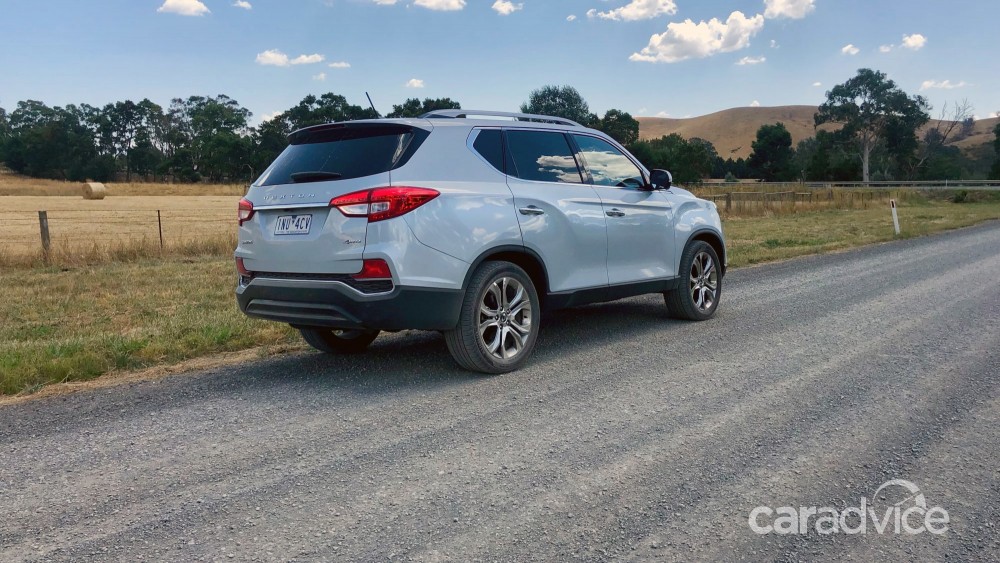
Moreover, the panel gaps are consistent, there were no squeaks or rattles, and the attention to detail seems good. It’s far more upmarket in feel than the Isuzu or the Ford Everest, though many punters like tough and rugged hard materials that they’re unafraid to scuff. It’s actually more aligned with premium city-friendly crossovers in its layout.
I kept thinking that if you covered the badge on the steering wheel and told punters it was the inside of a new Sorento or Santa Fe, few, if any, would question you further. It’s a substantial leap for the brand, and shows how much it has closed the gap to these bigger country-mates.
Ergonomically speaking, the steering wheel has reach adjustment unlike some rivals, a large digital trip computer with three speedo displays and a tyre-pressure gauge, a crisp 360-degree camera, and a simple yet elegant centre fascia – including a large touchscreen with fonts and a software design that clearly mimic Volvo, albeit with a landscape-oriented screen.
Said screen also houses DAB+, Apple CarPlay and Android Auto integration to augment the fast-repairing Bluetooth, and USB. On the downside, there’s no inbuilt satellite-navigation. This might aggravate older or more conservative buyers who don’t want to mirror their phone, or those who regularly venture outside of signal range.
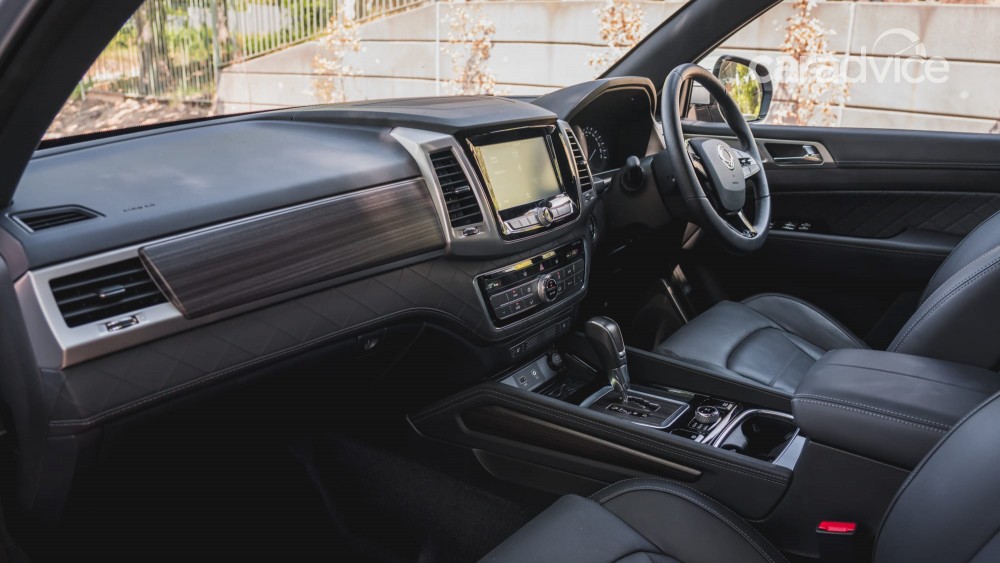
The middle seat row offers leg room and head room for two adults and one smaller person in the centre, though the sunroof eats head room somewhat. It’s certainly a more spacious back row than, say, a Mitsubishi Pajero Sport offers.
Occupants in this middle row also get LED lights, reclining seats, a USB point and a switchable 220V powerpoint, albeit you need a power adaptor to use it… Plus, you have your own adjustable air vents and even heated outboard seat bases like the Sorento GT-Line.
Access to the third row is secured by folding the middle-row seat-backs flat with one lever, and flipping the base with another. The seat bases are attached to hydraulic dampers to make the job even easier. The smaller portion of the 60:40 split-fold base is on the right-hand side.
The two well-trimmed back row seats offer comparable leg room and head room to rivals, meaning they are best saved for kids. More commendably, the side-protecting airbags deploy from the A-, B-, C- and D-pillars unlike most competitors, so all three rows have ample protection. A Santa Fe does not do that…
On the downside, they’re not very well ventilated, and that D-pillar is enormous. It’s a design-led choice to make that back window small, but it impacts severely on visibility. The Rexton is far from the only offender here.
When not in use, the third-row seats fold nicely flat into the floor, while the boot floor height is adjustable. The electric tailgate can be opened and closed from the key fob. The full-size spare wheel is located under the body. With the second row of seats also folded down, I was able to easily lay an inflatable king-single camp mattress in there (before moving it to my tent, guys…).
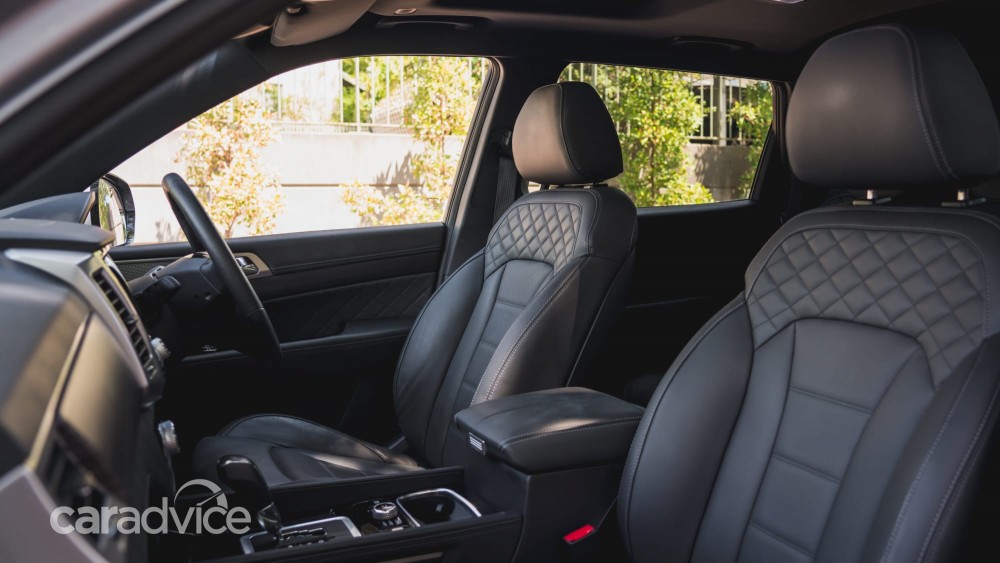
Unfortunately, the Rexton hasn’t been crash-tested by Euro NCAP or ANCAP, which is an issue that must be rectified. But aside from that full array of airbags mentioned, there’s also tech like autonomous emergency braking below 60km/h, forward-collision alert, lane-departure warning, auto high beam, blind-spot monitor, and rear cross-traffic alert.
SsangYong also points out the high-strength “world first” use of 1.5Gpa-grade ultra-strength steel in the body and the heavily braced ‘Quad Frame’ that it contends makes the Rexton stiffer than many competitors. How about you pay ANCAP to crash one into a wall, SsangYong?
We would also like to see active cruise control fitted, given the target demographic. The Rexton does, of course, have regular cruise control, but it’s prone to ‘creep’ above the speed limit by up to 10 per cent down hills, which will get you a big speeding fine in Victoria. Needs a tweak.
Moving away from that cabin, and on to the engine. It uses a 2.2-litre turbo-diesel produced by SsangYong, with competitive outputs of 133kW peak power and 420Nm peak torque, matched to a seven-speed automatic transmission purchased from former engine supplier Mercedes-Benz (with a naff old-school shifter layout).
The drivetrain meets the latest Euro VI emissions requirements, which reflects the fact the Rexton is sold in Europe. Claimed combined-cycle fuel economy is 8.3 litres per 100km, though on my 700km loop my yield was 10.4L/100km. The tank is 70L. As a side point, the base ($39,990) 2WD Rexton uses a 165kW/350Nm petrol engine not available in the Ultimate.
The engine does an acceptable job moving the Rexton’s 2233kg bulk, though the throttle response is never snappy, with plenty of torque on tap when you need it. Granted, the gearbox needs some tweaking to better ‘talk’ to the engine and be slightly more decisive with its shift points, but for the most part it felt perfectly adequate. Good, even.
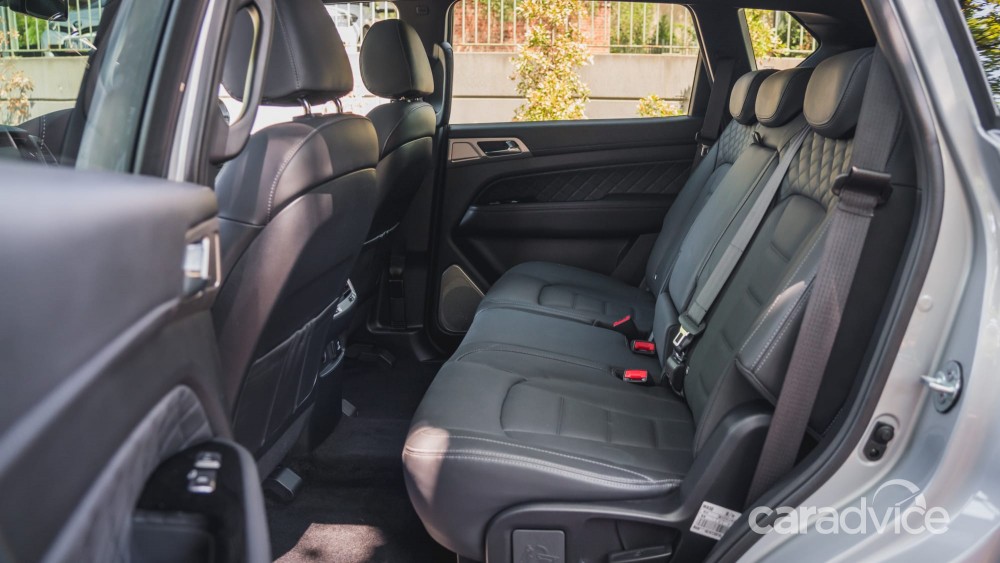
In terms of noise, vibration and harshness (NVH) suppression, it borders on brilliance. You can barely hear the engine from inside the car at all, even when idling, while the clatter from outside is decidedly muted. There are a lot of rival products from better-known brands that sound like tractors in comparison. Big tick to whichever engineer decided to fit hydraulic engine mounts too.
One of the Rexton’s other major strong suits is braked-trailer towing capacity, which is rated at a class-leading 3.5 tonnes on account of the high Gross Combined Mass. It’s hard to see how the engine wouldn’t struggle at the limit, but since our test car lacked a tow kit, we couldn’t find out. They are impressive numbers given most competitors are only rated at 3000kg.
Unlike the Santa Fe, and just like the MU-X, the Rexton is a body-on-frame layout rather than monocoque. This set-up is traditionally favoured for off-road use, with the trade-off being stiffness (something SsangYong says it has addressed) and on-road handling. Despite sharing the Musso’s core platform, the rear suspension is a 10-link independent set-up (complementing the front double wishbones).
It also has speed-sensitive electric-assisted steering that’s extremely light, which makes it a breeze around town, though as you’d expect it’s a car that prefers highway cruising to twisty roads, where there’s noticeable body roll. Horses for courses…
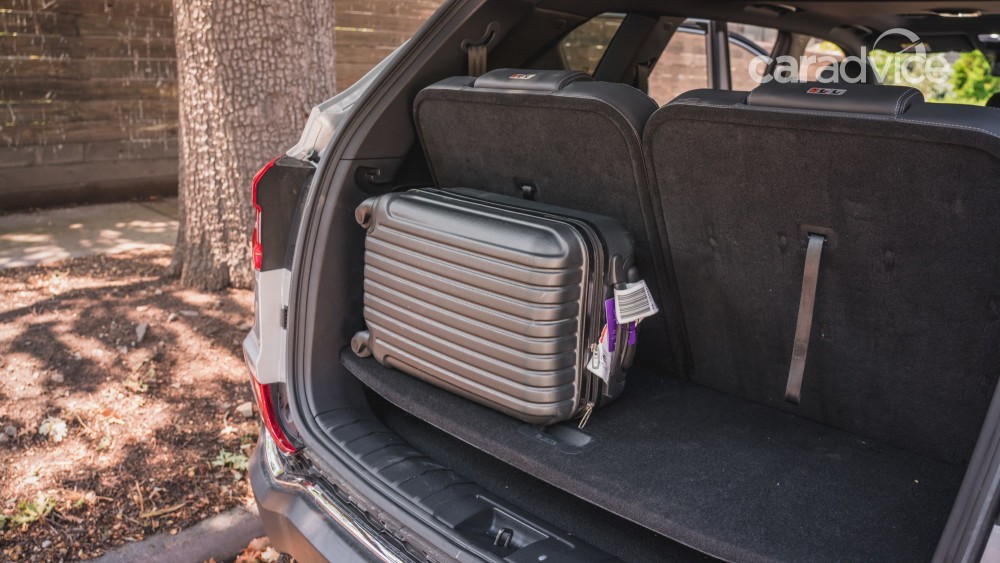
The ride quality is also an issue, on account of the slim road-biased Kumho tyres wrapping the bling-y 20-inch wheels, and the fixed dampers that need a retune to better absorb compression forces and control rebound. In other words, it feels a little fidgety and unsettled over corrugated gravel, or potholes – certainly against a Ford Everest or something of that ilk.
SsangYong Australia is making all the right noises about tuning the suspension of its products in Australia and tailored to our diverse road network (South Korea’s roads are much less variable), just like Hyundai and Kia do. Such a program would improve the Rexton, and we hope this plan gets underway soon.
Off-road, it’s a part-time 4x4, meaning you’re usually driving as a RWD until you switch the dial mounted along the driveshaft tunnel to 4H (4 High) or 4L (4 Low). The rear differential is Eaton’s automatic MLocker, which will automatically lock up the rear end when there is more than 100rpm of variation between each wheel.
Stats-wise, you get a minimum ground clearance of 224mm, and approach, departure and ramp/break-over angles of 20.5 degrees, 22 degrees and 20 degrees respectively.
I’ll let our bona fide 4x4 expert Sam Purcell do the talking, since yours truly is not as insightful:
“[The diff] works pretty well off-road, clicking into action relatively quickly to ease wheel-spin and keep you moving,” he said. “[But] the Rexton isn’t exactly brimming with ground clearance for off-roading, especially compared to its ute-based wagon nemeses. That’s your first limiting factor when heading off-road, along with the relatively tame tread pattern of the rubber…
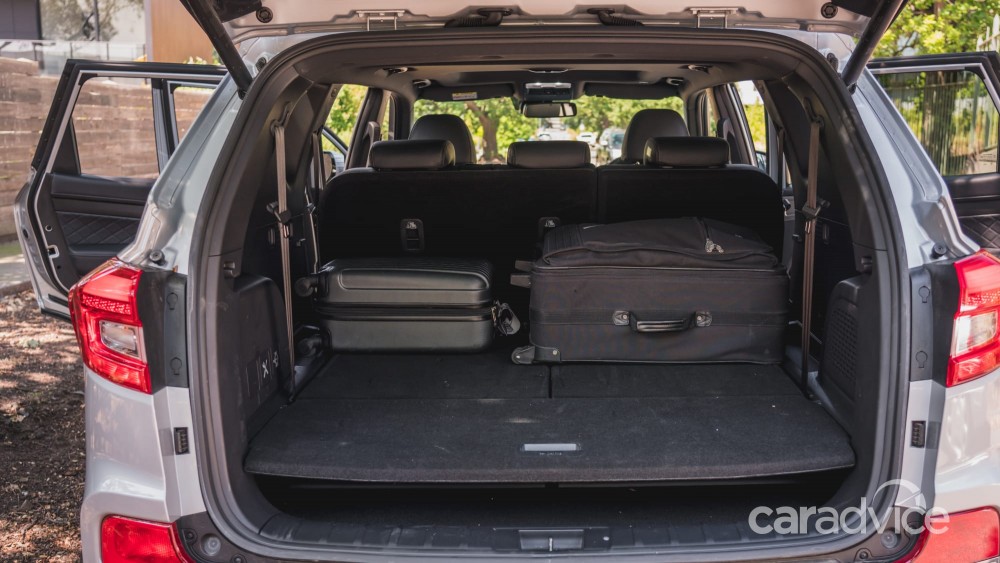
“The shorter wheelbase compared to the Musso (2865mm) and better clearance afforded by independent suspension mean it touches down less than the ute, and will be plenty capable enough for what prospective owners want. Hill descent control operates smoothly and keeps your speed at or below 5km/h quite well, which is nice for your average off-road descents.”
In terms of ownership costs, SsangYong has made a great start by offering a seven-year warranty that matches industry-leader Kia, plus roadside assistance and capped-price servicing (12-month/15,000km intervals) for the same period. On the downside, it only lists 28 dealerships at the moment, which gives it a smaller footprint than the major players.
As this review hopefully made clear, the SsangYong Rexton is a genuinely impressive seven-seat 4x4 in many ways. The cabin is upmarket and spacious, the engine suitably refined and capable, the design surprisingly resolved, and the promised after-sales support very good.
The majority of people will no doubt be inclined to watch and wait, and drop their hard-earned on better-known products from more established brands. But that doesn’t detract from the Rexton’s quality, and its deserved place atop the company’s line-up. SsangYong is no pretender, if this is what it can do.
Beautifully finished, spacious interior
Impressively quiet and refined diesel engine
Good safety and inclusions for the price
Seven-year warranty, roadside assist and capped-price servicing
Unsettled ride quality on these wheels and tyres
Lacks active cruise control
Currently serviced by a small dealer network







